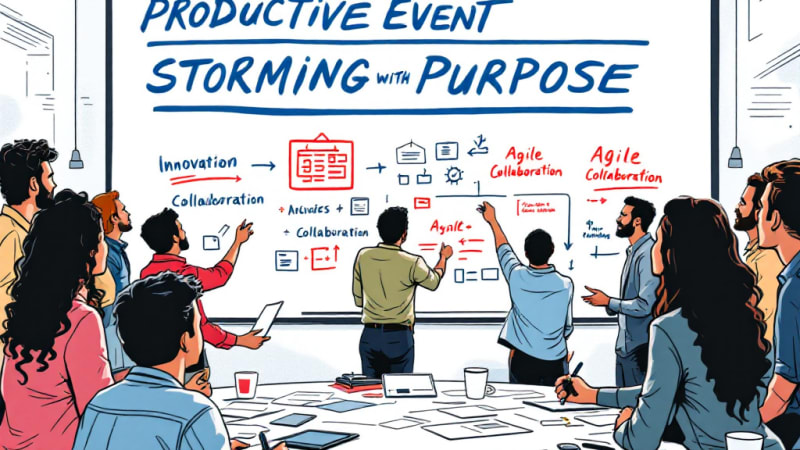
You walk into a meeting room, sticky notes in hand, ready to run an Event Storming session. Fifteen minutes in, you realize no one really knows why they’re here, half the team is distracted, and the conversation has already derailed into a debate about implementation details. Sound familiar? That’s what happens when you don’t prepare properly.
A great Event Storming session doesn’t just happen - it’s designed. The right people, clear goals, and a well-structured setup can mean the difference between an eye-opening discovery session and a frustrating waste of time. Here’s how to do it right.
How Big Is This Storm?
Event Storming can be as small as a single process or as expansive as your entire business domain. The trick is knowing how much ground you want to cover.
- Big Picture Event Storming – You’re mapping the entire business domain, from customer interactions to back-office operations. Great for uncovering major gaps, but expect it to get chaotic.
- Process-Level Event Storming – You’re drilling down into a specific workflow, like “How does a guest book a stay?” Perfect for designing bounded contexts.
- Design-Level Event Storming – You’re mapping a specific system’s behavior, focusing on commands, events, and agents. Best for refining an implementation plan.
If you pick too broad a scope, you’ll drown in sticky notes. Too narrow, and you risk missing key dependencies. A good starting point? Pick a well-known but problematic process and let the discussion expand naturally.
Getting the Right People in the Room
The worst Event Storming sessions are the ones where half the key knowledge is missing. If your goal is to uncover how things really work, you need people who actually know.
Who Should Be There?
- Domain Experts – The people who live and breathe the process every day. Without them, you’re guessing.
- Developers & Architects – The ones who will turn these insights into actual software.
- Product Owners & Business Analysts – The bridge between business needs and technical implementation.
- Facilitator – That’s you. Your job is to make sure the conversation stays on track and the right insights emerge.
How Many People?
Too few, and you risk blind spots. Too many, and it turns into chaos. 6-10 people is a sweet spot, small enough to keep discussions focused, large enough to capture different perspectives.
No, This Isn’t a Regular Meeting
If someone shows up expecting a PowerPoint presentation or a list of pre-defined requirements, they’re in for a shock. Event Storming is messy, nonlinear, and often uncomfortable. People need to know that in advance.
What Participants Need to Know
- We’re here to learn, not to finalize solutions. This is about understanding how things work before we decide how to build them.
- Everyone participates. No silent observers, every perspective matters.
- There are no wrong answers. If something is unclear, that’s a signal we need to explore it further.
- Expect surprises. Many assumptions will be challenged. That’s the point.
Tools & Materials
- A big wall or whiteboard – You’ll need space for a lot of sticky notes.
- Sticky notes (lots of them!) – Different colors for different elements (events, actors, systems, etc.).
- Markers – Thick enough that notes can be read from a distance.
- Tape or magnets – If you’re using a whiteboard, you’ll need a way to keep sticky notes from falling off.
Set the Stage
Before the session starts, make sure the physical (or virtual) space is set up for success. If it’s in-person, clear out tables and chairs - standing discussions are more dynamic. If it’s remote, set up a Miro or Mural board in advance so people aren’t fumbling with tools.
A well-prepared Event Storming session is like setting up a great dinner party: if you get the right people, the right setting, and the right expectations, the conversation will take care of itself.
Now, go make it happen.